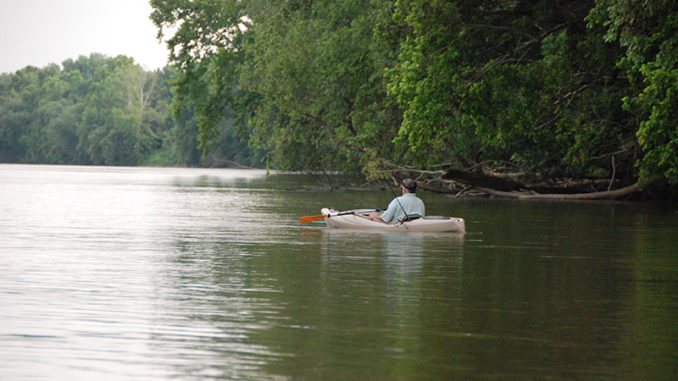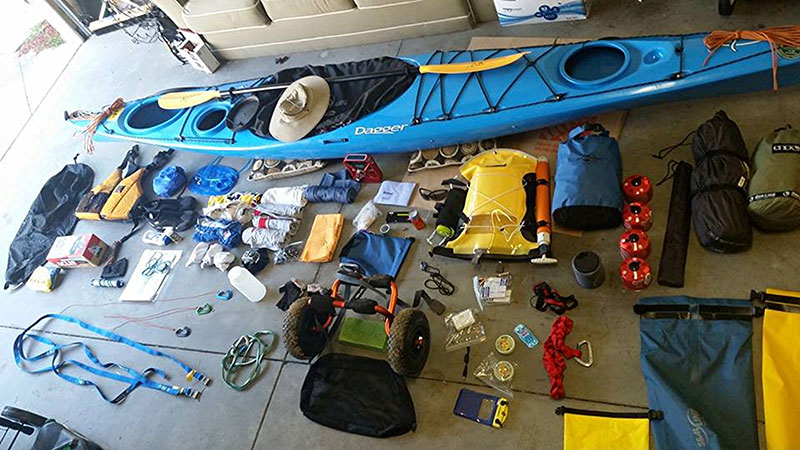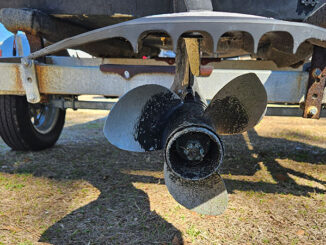
Of all the kayak fishing scenarios available to kayak anglers, the float trip is at the top of the list.
There has probably never been a better time to be a river kayak angler than now. Over the past 15 to 20 years, eco-awareness is at a high level, meaning areas formerly inaccessible now have ample and much easier access. Blueways, river trails, and paddle paths are popping up in nearly every floatable river system in both Carolinas.
The popularity has risen to the point that many well-known rivers now support paddling (and sometimes fishing) guides who are willing to take paddlers down the river, show them the local sights and hotspots, and assist with transporting boats and anglers back to the origination point once the trip is over.
Before heading off on a 5- or 10-mile stretch, spend a trip or two paddling up and back from the same access point. Once you round the first bend from the put in area, you’ll immediately get to experience the river, plus you’ll be able to start dialing in on what gear and tackle you’ll need later for longer trips.
The second thing is to check stream flows for the river. Consult the United States Geological Survey water levels online at waterdata.usgs.gov. This will help you determine whether the stream is currently floatable. Also consult a map of the area to look for the town/location the river gauge is located and how far this might be from where you’ll be paddling.
Higher river levels pose a serious threat to paddlers and it may be best to postpone the trip to another time. Extreme low water conditions may not be particularly hazardous, but could mean that shoals or hazards in or across the river are not passable and will require you to pull the boat over or around the area.
High, muddy water (most likely also fast moving) is probably not a good idea. Low, or stable and clear, is a better indicator of good paddling conditions as well as good fishing potential.
Satellite imagery from sites like Google Earth will allow you to zoom in and see more detail of what you’re likely to find on your trip.
Make sure you pack enough food and water for a full day, even if you do not intend to stay that long. Keep valuables and a fully charged cellphone in a dry storage box.
Finally, make sure to file a float plan with someone not going on the trip and always wear your PFD on the water.
Extend your trip
For experienced float trip anglers, the natural progression is to spend the night on the river, maybe even two. The first order of business is making sure it’s legal to camp in the place you stop for the night.
Once your overnight destination is determined, put some thought into the extra gear, food, water, and space you’ll need to paddle, fish, and transport everything comfortably.

Plan on everything getting wet. Packing gear in a real drybag, one with secure closure, is much more reliable than garbage bags. Pack along some paracord to make a clothesline in case you need to dry your camping gear and clothes during the latter part of the day while you finish collecting dinner from the river.
Freeze dried foods and water purification systems have come a long way from what you may remember them being as a kid or even younger adult. Visit a bona fide camping/hiking supplier and check them out.
The overnight float plan should be more detailed than the day trip float plan. You may not be able to touch base during the trip. But it is possible to leave would-be rescuers clues, such as chalking your initials on a bridge overpass or prominent tree trunk in sidewalk chalk, should it be necessary to track your progress.
Finally, expand your emergency kit to include medications, dressings, and other emergency equipment to help stabilize any injury or illness.
Properly prepared, planned, and executed, an overnight paddling/fishing excursion is one of the last truly wild adventures available in today’s modern world. Take your time and enjoy it.
Best Bets
NORTH CAROLINA
WHAT — Smallmouth bass, trout, musky
WHERE — French Broad River
HOW — The French Broad does not allow access to boats with motors. So expect a completely paddle-friendly trip. Try the Mepps Aglia in size 0, 1, or 2 for trout, Mepps Bronze Slammer for smallies, and their famous Mepps Musky Killer if you’re after water wolves.
LAUNCH — No problem with finding access, the website frenchbroadpaddle.com lists 38 access sites along the entire river.
INSIDER TIP — Before you head out, check the USGS river gauge data, provided for either Asheville, Rosman, or Marshall to get up-to-date river levels and flow data.
SOUTH CAROLINA
WHAT — Redbreast, bass, catfish
WHERE — Edisto River
HOW — Ultralight spinning tackle, 4 – 6-pound test and tiny jigs, spinner jigs, or combinations like Joe’s flies. A ton of cover holds redbreasts and the occasional small bass, so make sure you allow time to fish it.
LAUNCH — Get complete details on launch sites at ercktrail.org
INSIDER TIP — You may find areas where access is completely blocked by fallen trees or large limbs. Pack along a sharp, folding camp saw to make passage easier and be prepared to get out of the boat and portage if necessary.





Be the first to comment